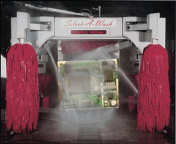 Minnesota-based FSI International, a manufacturer of semiconductor wafer cleaning products, voluntarily disclosed to the Bureau of Industry and Security (“BISâ€) that it had exported fluoropolymer-coated pumps and valves classified under ECCN 2B350 without first obtaining an export license from BIS. Last month, FSI entered into a settlement agreement pursuant to which it agreed to pay $400,000 in fines. The exports in question consisted of 66 shipments valued at around $265,000. (I didn’t actually add up the amounts in the schedule of exports but did a rough estimate.)
Minnesota-based FSI International, a manufacturer of semiconductor wafer cleaning products, voluntarily disclosed to the Bureau of Industry and Security (“BISâ€) that it had exported fluoropolymer-coated pumps and valves classified under ECCN 2B350 without first obtaining an export license from BIS. Last month, FSI entered into a settlement agreement pursuant to which it agreed to pay $400,000 in fines. The exports in question consisted of 66 shipments valued at around $265,000. (I didn’t actually add up the amounts in the schedule of exports but did a rough estimate.)
Those are the facts, but I think that my speculation about what happened here offers a valuable compliance lesson, one that suggests that BIS’s “Interpretation 2” is both a boon and a bane to exporters. The equipment produced by FSI is designed to clean semiconductor materials at various stages in the manufacture of those materials into integrated circuits. Because the FSI equipment doesn’t make the semiconductor wafers or etch or imprint the patterns into them, FSI’s equipment does not appear to be controlled by ECCN 3B001, the most likely classification for such equipment. The exports in question — fluoropolymer-coated valves and pumps — were likely parts and components of FSI’s cleaning equipment which FSI was exporting to its customers to maintain or to repair the equipment.
By now you should see where I’m going with this. Interpretation 2, which is set forth in EAR § 770.2(b), is what you might call BIS’s “no-see-through” rule. It states that parts integrated into equipment do not require licenses for export as long as the parts are “normal and usual” components of the equipment and have not been incorporated into the equipment for the purpose of evading the rules. But, and it’s an important “but,” if the parts are exported when not incorporated into the equipment, whether as spares, replacements, or otherwise, they may require a license depending on the ECCN of the part and its destination.
The lesson here is that although Interpretation 2 makes the classification of an item easier and permits its export even when it has export-controlled parts (the boon), Interpretation 2 also means that spare parts may still have to be classified before they are exported for maintenance or repair purposes (the bane). It seems likely that FSI had determined that its cleaning equipment was EAR99 and never thought about separately classifying its parts. Even if equipment has an ECCN other than EAR99, the reasons for control for the equipment’s ECCN may be different from those for the ECCNs for the parts, meaning that export licenses are required for both but possibly for different countries.
 Permalink
Permalink
Copyright © 2009 Clif Burns. All Rights Reserved.
(No republication, syndication or use permitted without my consent.)

 Posted by
Posted by  Category:
Category: 

